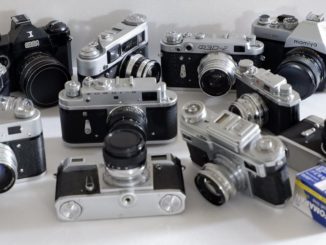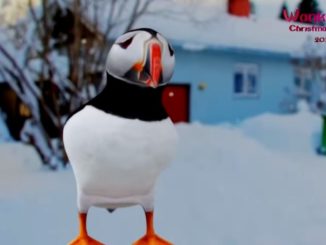
This article is in response to a number of questions and requests by posters on here; in particular, how to take a photograph of the Moon and not have the highlights blown out. However, I will also discuss night and low light photography (twilight, dusk, and dawn).
First, we must go back to basics and discuss what makes a perfect exposure.
Be it film or digital the principles are the same. A “correct” exposure renders the full range of tones, from a perfect black to a pure white, or detail in both shadows and highlights if using colour, and this is achieved by manipulation of the 3 factors which control exposure – the Exposure Triangle.

Any change in any one of these affects the amount of light falling on the film or sensor.
ISO = the sensitivity of the film or digital sensor to light, the higher the number the more sensitive. There is a trade off though, the higher the number means more digital “noise”, a grain like effect which appears first in the shadows. Obviously, being night time there are going to be lots of shadows, so keep the ISO as low as possible, 100 to 200 is best, although modern digital cameras exhibit little or no noise up to 3200 ISO.
Aperture = The size of the opening in the lens which allows the passage of light, the smaller the number the more light is passed to the film or sensor. Again, there’s a trade off, the smaller the number (f2.8 or less) the shallower the depth of field, the zone which has acceptable sharpness. DOF (Depth of Field) is a topic all of its own, for now we should be using f5.6 – f8 as a starting point.
Shutter Speed = The amount of time, in seconds or fractions of a second that the film or sensor is exposed to light. The longer the time the more light is passed. Again, compromises have to be made, a slower shutter speed allows the subject to move whilst the shutter is open, leading to motion blur – this is not a bad thing, however, in night photography, as we will see later.
First of all, let us get one term out of the way
I sometimes refer to the “Sunny 16 Rule”
This is an old fashioned, but still viable, way of estimating correct exposure, and it goes like this:-
The basic rule of thumb states that if you have a clear, sunny day and you set your aperture to f/16, whatever ISO you are using your shutter speed will be the reciprocal value of that ISO value (ISO X = 1/X seconds shutter speed)
Correspondingly, if it is sunny and cloudy the aperture changes to f11 (or the shutter speed drops to 1/100 – remember, they are linked)
Likewise, for a cloudy but bright day the aperture opens up to f8 (or a shutter speed of 1/50), and so on.
However, this does not help us when it comes to night and low light photography.
Equipment
What do you need to take photographs at night?
Camera
Well, obviously, the first requirement is a camera, but one which you can switch to full manual control. You need to have full control of all three variables, as well as one we haven’t yet discussed, Focus.
This means that simple Point and Shoot cameras aren’t really suitable for night photography, even though they may have a “night” setting. You will not need to use flash, in fact flash will spoil most night shots.
Lens
You will need a lens, sometimes the one which came with your camera is sufficient (it may be fixed to the camera anyway and not be interchangeable)
You need to be able to focus the lens manually, so the ability to switch off autofocus is vital.
Focal length doesn’t really matter, unless you want Moon close up shots, then you need a telephoto lens.
Tripod
You need something to hold the camera steady while the shutter is open (sometimes you need to have the shutter open for more than a minute, no-one can hand hold a camera steady for that length of time), therefore a wall or something can be used, but usually there isn’t a suitable wall where you need one. That means a tripod, and a cheap one is better than none, even a table tripod, or pocket tripod can be used)
Some means of calculating exposure
Unless you are like me, a camera and film nerd, you will probably be using a digital camera, so you can use the trial and error method for calculating exposure (take a picture using the settings you think you may need, look at the image, make any needed adjustments, take another shot and check again)
A torch
It will be dark when you take night photographs (Duhh, of course) so you will need a small torch to see what you are doing. This is switched off while you take a picture, unless you want to try “Painting with Light” , a topic for another article.
And in reality, that is pretty much it. You may need warm clothes and gloves as it can get cold, a flask of tea or coffee, a companion because, at first, it can be a little daunting being alone in the dark with a load of camera gear, especially in a big city.
But that is the minimum needed – all you need is the subject/s.
OK, let’s get the main one out of the way.
Photographing the Moon

Photographing the Moon is easy. Remember, what you see, the Moon, has no light of its own, it is illuminated solely by the Sun and what you see is just that, an object in full sunlight.
So, the settings you would use, as a starting point, are these.
ISO = 100 to 200
Aperture = f16 – f11
Shutter speed = depends on ISO, but use the reciprocal (1/ISO) therefore @ 100 ISO use 1/100
Focus = Infinity – the Moon is 240,000 miles away, use infinity.
Now, if you are using a tripod you can zoom in as far as your telephoto lens allows then gently take the picture.
However, I use a cable release, like the old fashioned photographers,but for some cameras you can also get remote electronic releases, or even a smartphone app.
That is the basis of Moon photography, use a small aperture, f11 or f16, set the shutter speed to a reciprocal of the ISO, steady the camera on a tripod and fire away. If you aren’t using a tripod and are zoomed into the Moon use a reciprocal of the focal length instead of the ISO for your shutter speed and adjust the aperture or ISO accordingly.
e.g. Zoomed in to 500mm, shutter speed 1/500, ISO 100, aperture f8 or f5.6
Remember, ISO, Shutter speed, and Aperture are all linked when making the correct exposure.
Right, you have dozens of Moon photographs, what next?
Night time subjects abound:-
- Illuminated buildings
- Roads with moving traffic
- Filling stations – a cliché, but good to shoot
- Shop windows
- Public transport
- my favourite – Chinese Restaurants
- Cafes
The list is endless, just experiment, but a good starting point for exposure is ISO 100/200, 5 seconds shutter speed, aperture f11
Hang on? 5 seconds shutter speed? How do I do that?
Well, when you have a manual capable camera there will be a shutter setting of “B” – that harks back to the early days of photography when the shutter on those big plate cameras was fired by squeezing a rubber bulb, and in fact that is what the “B” stands for. As long as the shutter button (or cable release or remote) is pressed the shutter will remain open exposing the sensor. A little experimentation will soon get you in the ball park of a correct exposure.
One thing you will take from this, however, is exposure is usually adjusted by the length of time the shutter is open, not by increasing ISO sensitivity or opening the aperture from f8 – f11 to f2.8 or wider.
Illuminated buildings, usually floodlit
Depending on the level of illumination sometimes you can get away with quite short exposure times, sometimes a couple of seconds or less. This is the Son et Lumiere level of lighting. On the other hand a building may be lit by ambient light, a street light or similar, then you may need to extend the exposure time. With a digital camera, on a tripod, a shutter speed of 2-5 seconds is normal.

Roads with moving traffic
A great subject. Everyone has seen those photographs of tail light streaks on motorways or city streets.
A longer shutter speed is better for this, even 30 seconds is sometimes needed. If necessary close the aperture to f16 or f22.
You can even get Neutral density filters, like a lens from a pair of very dark sunglasses to restrict the light entering the lens, making exposure times of minutes rather than seconds.

Filling stations
A favourite. These are usually very brightly lit and a second or so might be a good starting point. If you want the illusion of traffic moving through the pumps use a Neutral Density filter, a 10 stop will extend a 1 second exposure to 9 minutes or so, enough to freeze some movement but allow light streaks etc.

Shop windows and displays
Usually brighter than you would think. A couple of seconds might be enough. If you are far enough back you may also get the fleeting movement of passers by to add to the effect.

Public transport & People working
Passengers shot through steamy bus windows is the usual picture here, but train stations, bus stations, and the Tube make good subjects. You may have to get a little creative with camera support as tripods are usually banned on most sites, but a little table model on a bench would do. The key is experimentation.
People at work hardly ever notice a camera, so you can take pics to your hearts content.

Chinese Restaurants – my favourite
Plenty of neon, bright colours, activity. Again, a tripod set up across the road, usual night settings, experiment, sometimes a slightly under exposed picture conveys the mood better than a brightly lit one.

Cafes
Pretty much the same as Chinese Restaurants, but aim to get diners sitting in the windows, similar to the “Nighthawks” painting by Edward Hopper.



These techniques are just jumping off points, the trick is to experiment.
Try black and white if your camera has that setting available to you. This will give you some moody, film noir images. Don’t be afraid of deep shadows, they will enhance the lighted portions of the image and hide any clutter that daylight exposes.
Try whacking the ISO up to 3200, or even 6400, and try hand holding the camera with faster shutter speeds/smaller apertures, people sitting on the bus as it stops at a bus stop on a rainy night.
One thing, however. DON’T USE FLASH!
The blinding light of flash does two things, it ruins your pictures and it advertises your presence to those who may object to photography. Try to be unobtrusive without being stealthy.
Night shooting will enhance your images, fussy backgrounds will be eliminated and your subject will be the focal point.
So, you have taken plenty of night time and low light pictures, think about buying a better camera, because you are now becoming a photographer, not just someone with a camera.
Get out there, the nights will soon be cutting in, soon be dark at 4pm. Just the time to take some pictures you can be proud of.
© Grimy Miner 2023



